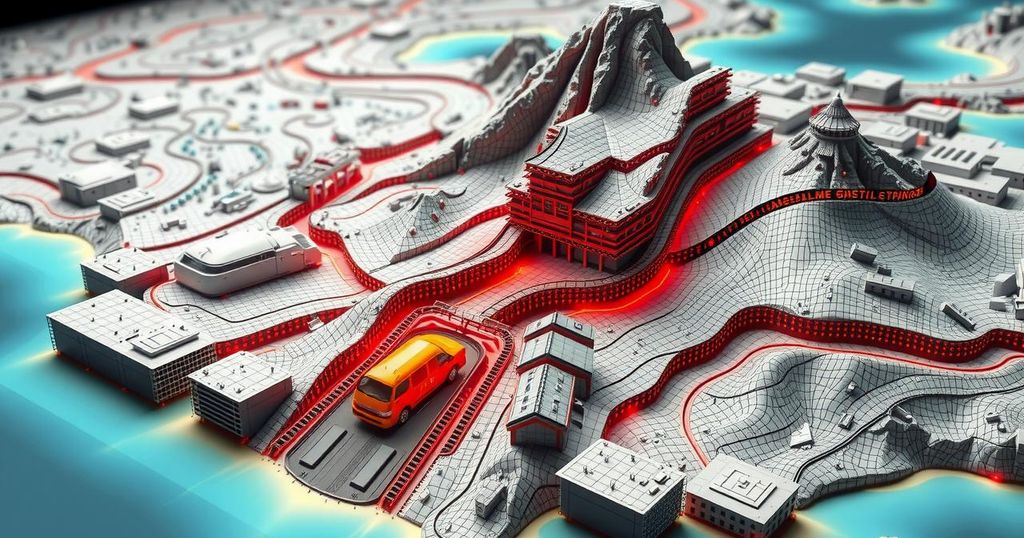Recent advancements in artificial intelligence have significantly impacted earthquake prediction capabilities. In 2023, a model developed by researchers at the University of Texas, named DiTing, achieved 70% predictive accuracy for earthquakes, while efforts at Los Alamos National Laboratory successfully identified precursors to earthquakes. These innovations suggest a new era of disaster preparedness, offering communities invaluable insights that may ultimately save lives.
For many years, the concept of reliable earthquake prediction has seemed elusive, posing a significant challenge for scientists. Nevertheless, recent advancements in artificial intelligence (AI) are beginning to revolutionize this field. In a landmark study conducted in 2023, researchers from the Jackson School of Geosciences at the University of Texas at Austin developed an AI model, known as DiTing, that demonstrated a capacity to predict 70% of earthquakes within a week, utilizing data sourced from five years of seismic observations in China. Throughout a seven-month trial, DiTing accurately forecasted 14 earthquakes near their epicenters, representing a significant achievement in seismic prediction technology.
In parallel, researchers at Los Alamos National Laboratory have made comparable strides by employing machine learning methodologies to discern faint precursors to earthquakes, effectively sifting through seismic noise. Their success at the Kīlauea volcano in Hawaii marks a notable accomplishment, marking the first time such subtle signals have been detected in the context of a stick-slip fault, which is linked to severe earthquakes.
Christopher Johnson, the lead researcher at Los Alamos, remarked on the innovation: “We wanted to see if we could pull out signals from the noise and identify where the system was nearing a major slip in the loading cycle.” This exploration held immense promise for developing more effective early warning systems moving forward.
The implications of AI in earthquake prediction extend beyond mere forecasting; they offer real-time insights that could be critical in informing community responses during potential seismic events. As models like DiTing advance, they pave the way for enhanced global seismic monitoring frameworks. By integrating extensive datasets and leveraging advanced technologies, these systems hold the potential to transform earthquake detection methodologies significantly.
The advancements witnessed in institutions such as the University of Texas at Austin and Los Alamos National Laboratory illustrate the unparalleled potential of AI within this domain. The integration of machine learning techniques heralds a future where the unpredictable nature of earthquakes could become more comprehensible and manageable, ultimately supporting improved disaster preparedness efforts.
As we continue to navigate the development of sophisticated AI systems, the prospect of reliable earthquake prediction no longer appears as a distant goal, but rather as an emerging reality. The ongoing initiatives underscore the promise of AI in redefining humanity’s engagement with natural disasters, transitioning from reactive measures to proactive strategies aimed at resilience.
The quest for accurate earthquake prediction has troubled scientists for decades, primarily due to the abrupt and violent nature of earthquakes which have resisted traditional forecasting techniques. The seismic activities represent a significant hazard to life and infrastructure; thus, breakthroughs in prediction methods are imperative. Artificial intelligence technologies have emerged in recent years as a potent tool for analyzing vast datasets, which may enable more reliable predictions of seismic events. These advancements represent a pivotal shift towards potentially saving lives and providing communities with essential lead time before potential disasters strike.
Recent advancements in AI, particularly with projects such as DiTing and initiatives at Los Alamos National Laboratory, reveal promising potential in earthquake prediction methodologies. By successfully analyzing seismic signals and identifying precursors to seismic events, researchers are beginning to reshape the landscape of earthquake forecasting. These developments not only enhance detection accuracy but could ultimately transform communities’ abilities to respond proactively to seismic threats, marking a significant transition in humanity’s approach to natural disaster preparedness and resilience.
Original Source: indiaai.gov.in






